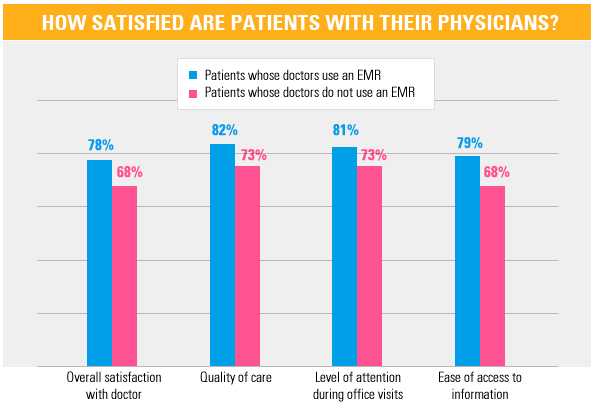Electronic Medical Records Access Increases Patient Satisfaction
- Blake Rodocker
- June 22, 2014

A recent study by Aeffect and 88 Brand Partners showed that patients who use electronic medical records are substantially more satisfied with their physicians overall. They also tend to be more satisfied when it comes to different areas of their care.
Across the board, satisfaction rates across all 8 categories were between 9 and 11 basis points higher for those practices that engaged their patients electronically. The patient engagement rate for those practices surveyed also showed that 24 percent of patients have accessed their medical records via a web or mobile interface. (That’s significantly higher than the 5 percent usage rate that Stage 2 requires). Additionally, the survey found that 52 percent were interested non-users, which is also a very telling statistic.
“The study findings clearly indicate a strong link between EMR users and their confidence in the quality of healthcare they receive,” said Tamara O’Shaughnessy, Vice President, Aeffect in a press release. “There is solid evidence that the investment providers continue to make in EMR systems is likely to put adopters at a competitive advantage and yield dividends beyond the expected operational efficiencies-namely it will enhance patient loyalty and satisfaction.”
Taking all of these stats into consideration, the numbers shows a willingness by the majority of those surveyed and a sample of the public to adopt EMR and patient portal technology. But it’s critical to note that patient engagement is a process that that doesn’t happen overnight. It takes months, even years to get to these kinds of adoption rates. So if you’re thinking your practice can replicate a 24 percent patient engagement rate in the next 30 or even 60 days, think again!
Now that these early EMR and patient portal software adopters have paved the way and “proven the concept,” what are you waiting for? Regardless of whether your practice has yet to start the Meaningful Use journey or has gotten stuck along the way, the time is now to start the patient engagement process to attract and retain loyal patients.
This article was originally published on the Medical Web Experts blog.
